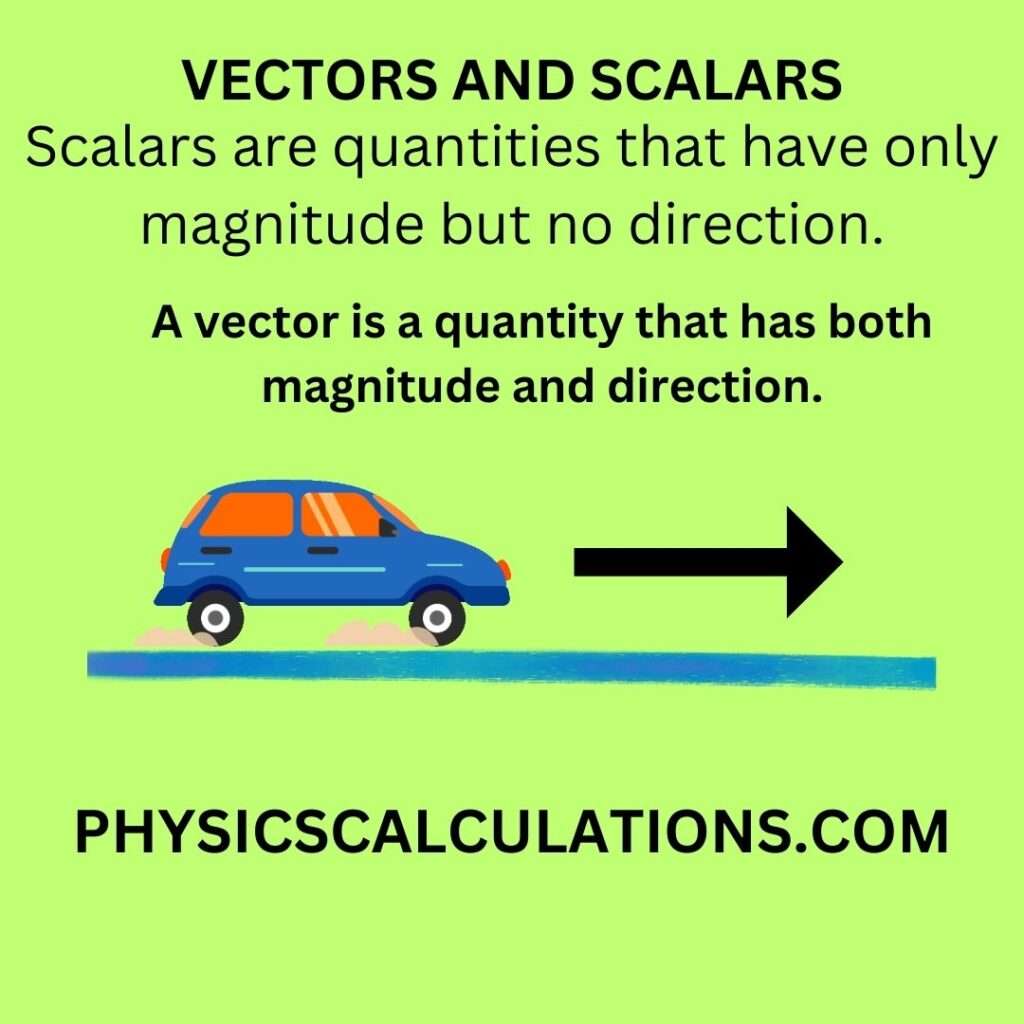Vectors and Scalars
When it comes to studying physics, there are two important concepts that every student must know: Vectors and Scalars. Both of these terms are used to describe the physical quantities. And those quantities help us to measure various aspects of motion, energy, and force.

However, understanding the differences between them is essential for mastering the subject and excelling in exams. In this article, we’ll dive into the details of vectors and scalars, their differences, and real-world applications.
What are Vectors?
A vector is a quantity that has both magnitude and direction. In other words, it’s a physical quantity that requires a direction to be fully defined. For instance, velocity is a vector quantity. This is because it describes the rate at which an object moves in a specific direction. They are represented by an arrow with a specific length and a specified direction. Vectors can describe physical quantities such as displacement (e.g., 10 meters east), velocity (e.g., 20 meters per second north), and force (e.g., 50 Newtons to the right). When working with vectors, you need to consider both the magnitude and direction, making vector mathematics more complex than scalar mathematics.
Similarly, force is also a vector quantity because it has both magnitude and direction. Some other examples of vector quantities are displacement, acceleration, and momentum.
What are Scalars?
On the other hand, scalars are quantities that have only magnitude but no direction. In other words, they’re the physical quantities that can be completely defined by their magnitude alone. Examples of scalar quantities include temperature, mass, time, and energy.
They are described by a single numerical value and are accompanied by a unit of measurement. Scalars don’t have a specific direction associated with them. Examples of scalars include mass (e.g., 5 kg), time (e.g., 10 seconds), and temperature (e.g., 30 degrees Celsius). When you perform mathematical operations on scalars, like addition or multiplication, you treat them as ordinary numbers.
Key Differences between Vectors and Scalars
One of the main differences between vectors and scalars is that vectors require direction while scalars do not. Also, we represent vectors by arrows to show their direction. Whereas we identify scalars by a single numerical value.
For instance, if we say that a car is moving at 50 miles per hour. Then the direction of the movement of the car is a scalar quantity. This is because it only describes the magnitude of the car’s speed but not its direction.
However, if we say that a car is moving at 50 miles per hour towards the east. We can then describe it as a vector quantity. This is because it includes both the magnitude and direction of the car’s velocity.
Another difference between vectors and scalars is how we add or subtract them. When adding or subtracting vectors, it’s important to consider both their magnitudes and directions. However, when adding or subtracting scalars, we only need to add or subtract their magnitudes.
For example, if you’re driving a car at 40 miles per hour, and then you increase your speed to 60 miles per hour, the change in speed is 20 miles per hour (a scalar quantity).
However, if you’re driving at 40 miles per hour towards the east and then change your direction to the north while increasing your speed to 60 miles per hour, you’ve added a vector quantity to your original velocity.
Applications of Vectors and Scalars
The concepts of vectors and scalars are not just limited to physics textbooks but have numerous real-world applications. For instance, we apply vectors in navigation and mapping. This is because they help in calculating the distance and direction between two points.
We also apply these quantities in engineering and design to determine the force required to move an object in a specific direction. On the other hand, we apply scalars in various fields such as finance, economics, and medicine to calculate and analyze numerical data.
Summary
Summarily, vectors and scalars are two essential concepts in the study of physics, and understanding their differences is crucial for excelling in the subject. While vectors require direction, scalars do not, and we add or subtract the two types of quantities differently.
Both vectors and scalars have practical applications in various fields, and being able to distinguish between them is necessary for understanding their real-world implications
You may also like to read:
How to Calculate Volume From General Gas Law